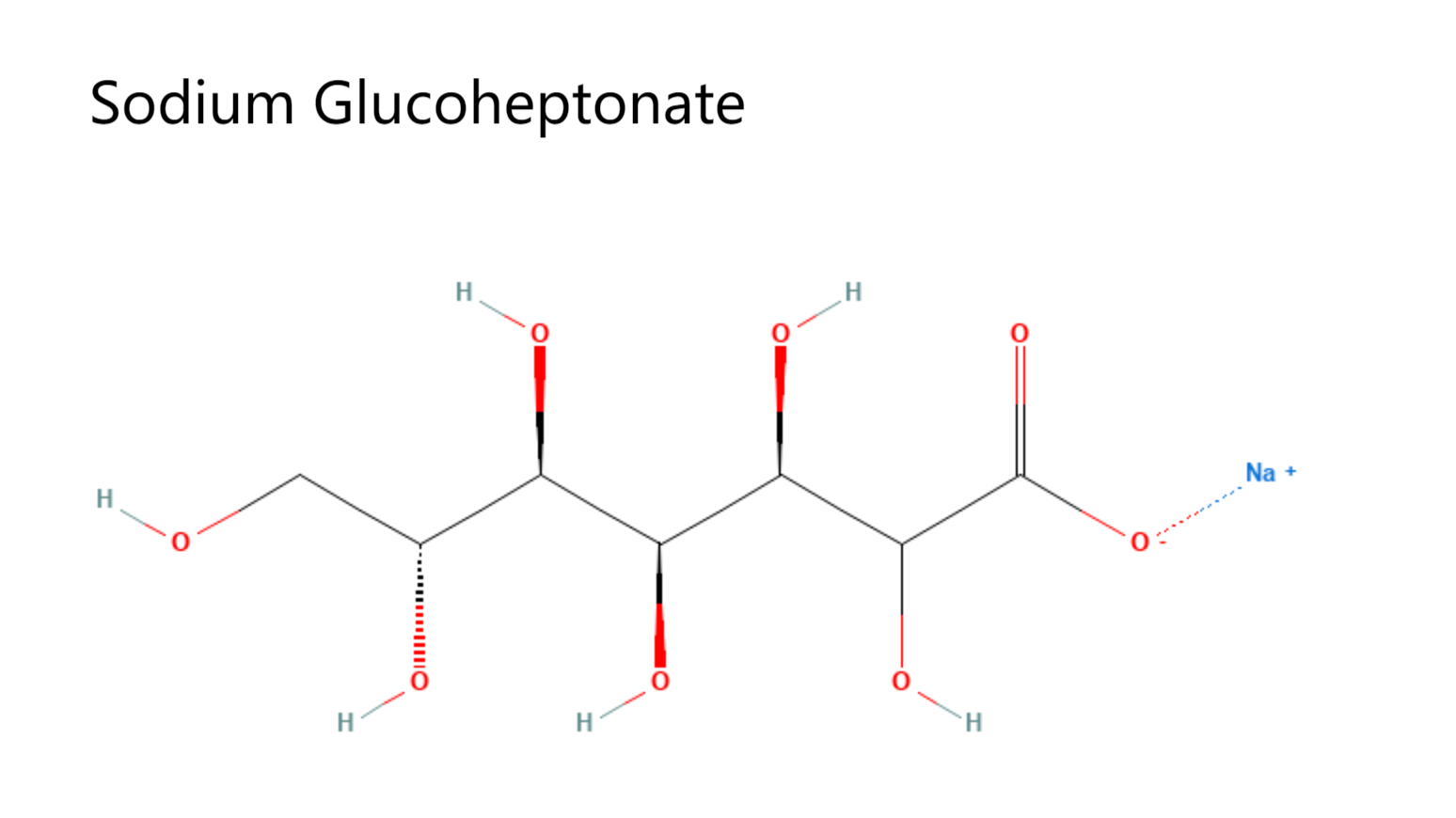50% Liquid
CAS Number: 31138-65-5, multi-constituent substance (compositions: CAS# 30080-50-3 & CAS# 13007-85-7);
Synonyms:
D-gluco-Heptonic acid, sodium salt (1:1), (2.xi.)-;
D-gluco-Heptonic acid, monosodium salt, (2ξ)-;
CAS# 30080-50-3 (D-glycero-D-ido-heptonic acid, monosodium salt) and CAS# 13007-85-7 (D-glycero-D-gulo-heptonic acid, monosodium salt);
Crystal Powder
CAS# 13007-85-7, D-glycero-D-gulo-Heptonic acid, sodium salt (1:1);
Synonyms:
Sodium (2R,3R,4S,5R,6R)-2,3,4,5,6,7-hexahydroxyheptanoate;
CAS# 10094-62-9, Sodium Glucoheptonate dihydrate;
Gluceptate sodium dihydrate;
Sodium D-glycero-D-gulo-heptonate dihydrate;
.alpha.,.delta.-Glucoheptonic acid, sodium salt, dihydrate;
Sodium Glucoheptonate is a safe and green chelating/complexing agent, sequestrant, especial for iron Fe3+. It has better complexing effect under alkaline condition.
Sodium glucoheptanoate is widely used in metal surface cleaning, food packaging glass bottle cleaning, concrete admixture, and other industries.
Technical Data (50% liquid):
(1) Appearance: Brown liquid
(2) Solid Content: ≥50%
(3) Relative density: ≥1.25
(4) pH(1% solution, @20℃): ≥8.0
Technical Data (crystal powder):
(1) Appearance: White or Off-white Crystal Powder
(2) Content: ≥ 99%
(3) Moisture: ≤13.5%
(4) pH(1% solution, @20℃): 8.0±1.0
(5) Chloride: ≤0.01%
(6) Sulfate: ≤0.1%
(7) Reducing sugar: <0.5%
Uses
1.Sodium glucoheptanoate has better complexing effect under alkaline condition. This product is widely used in metal surface cleaning, food packaging glass bottle cleaning, concrete admixture, and other industries.
2.Under the synergistic effect produced by sodium glucogluconate and caustic soda, it can effectively remove the existing paint on the surface of steel for repainting, and at the same time, it has the effect of corrosion and scale inhibition.
3. Sodium Glucoheptanoate has good complexation performance and is non-toxic, it is widely used in large-scale water treatment installations, such as alkaline descaling operations in boiler condensers and heat exchangers.
4. When bleaching textile fabrics, a large number of peroxides are used, and the addition of sodium glucoheptanoate can effectively complex all kinds of variable metal ions, thus improving the stability of peroxides.
Chelating agents are also known as sequestering agents (sequestrants), complexing agents.
Related Products
Traditonal Chelating Agents
Aminopolycarboxylates: EDTA acid, EDTA-Na/K, DTPA & DTPA-5Na/5K
Polyphosphonates: HEDP, DTPMP, ATMP, PBTCA
Package:
50% liquid: 1250kg/IBC tank, 250kg/drum.
Powder: woven bag, 25kg/bag.
Similar Chemicals:
D-glycero-D-gulo-heptonic acid, calcium salt (2:1), CAS# 17140-60-2;
D-Gluconic acid, sodium salt (1:1), CAS# 527-07-1;
D-Gluconic acid, sodium salt (1:?), CAS# 14906-97-9;
D-Glucose, reaction products with nitric acid and sodium nitrite (1:1), sodium salts, CAS# 1362053-75-5 (Sodium glucarate);
D-gluconic acid, CAS# 526-95-4;




